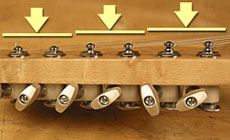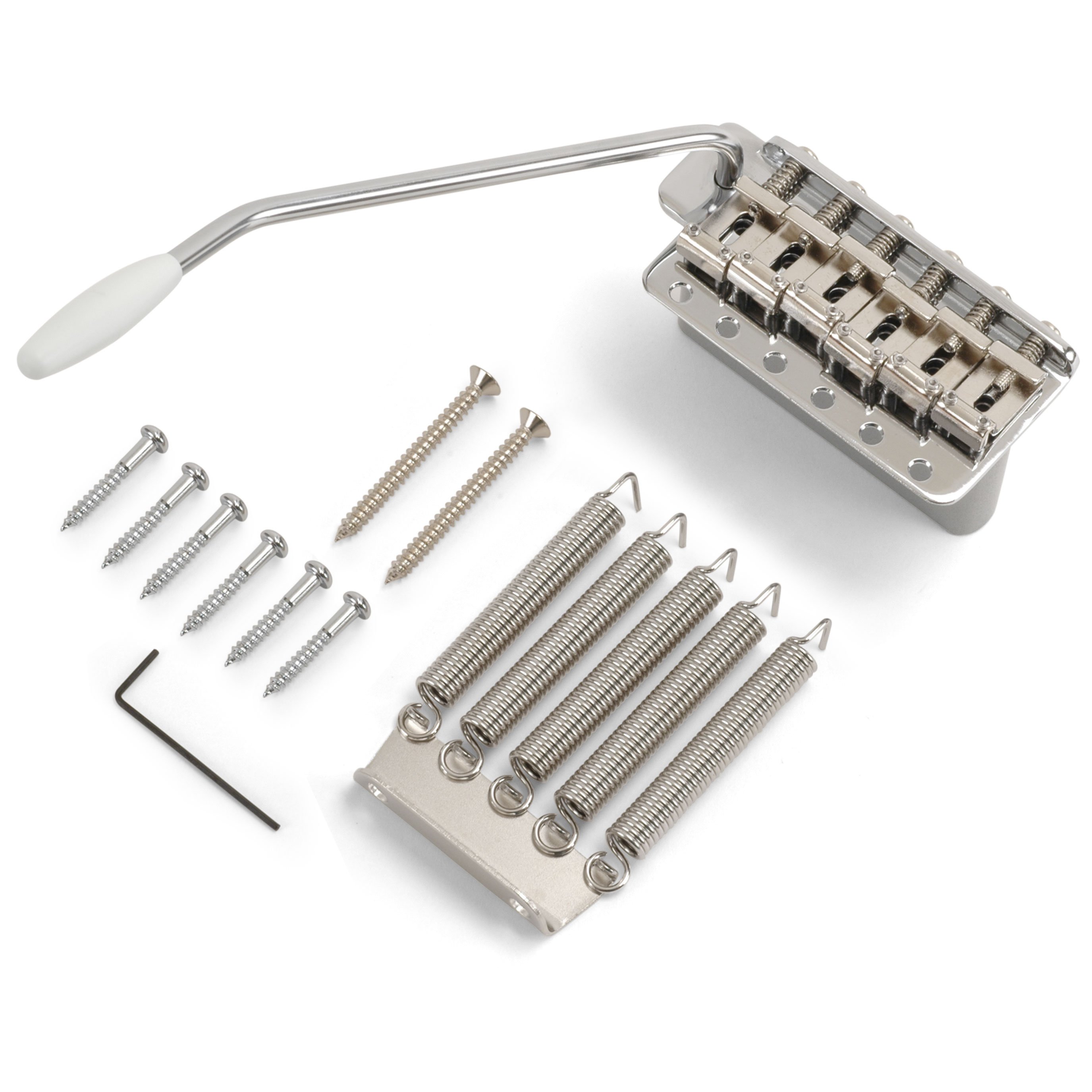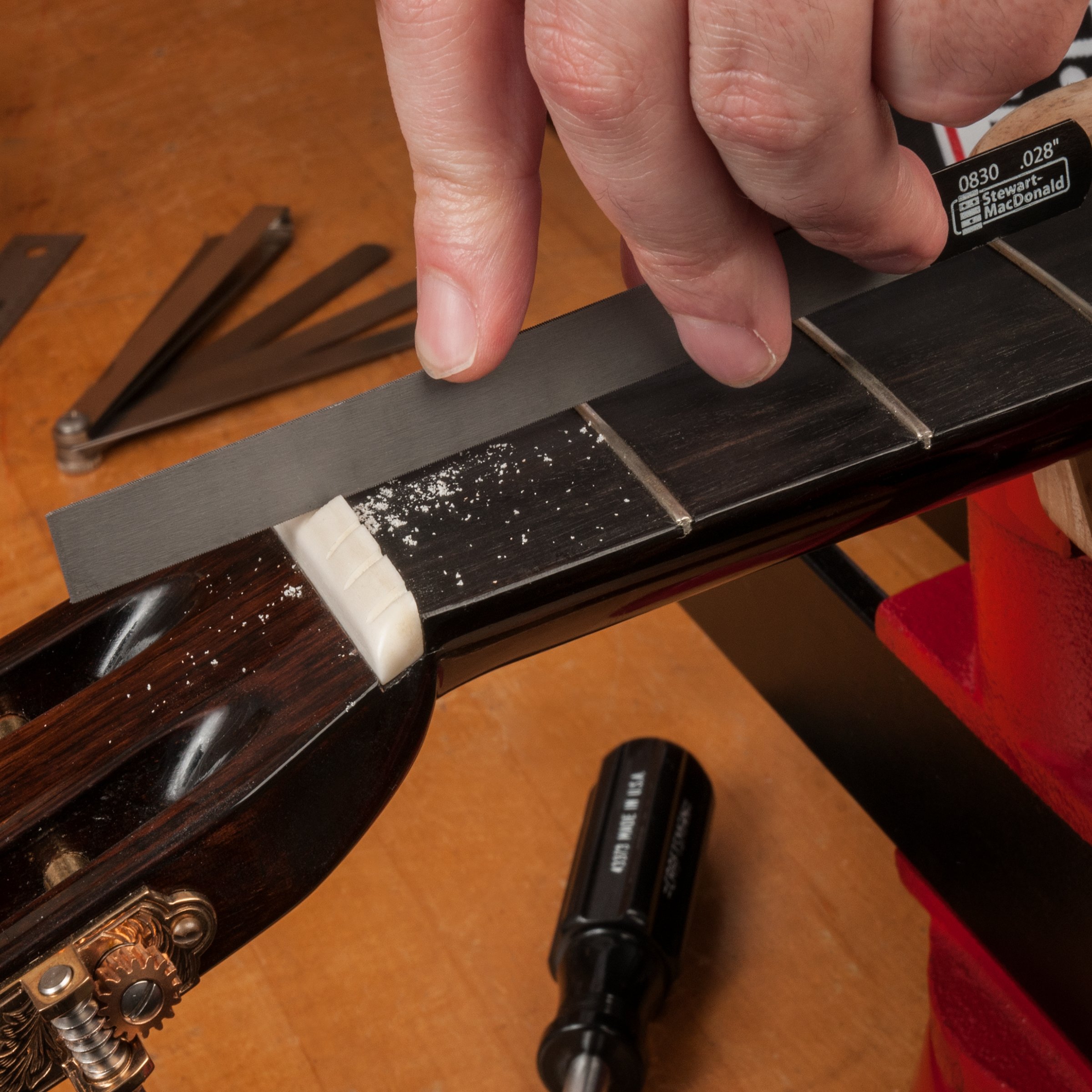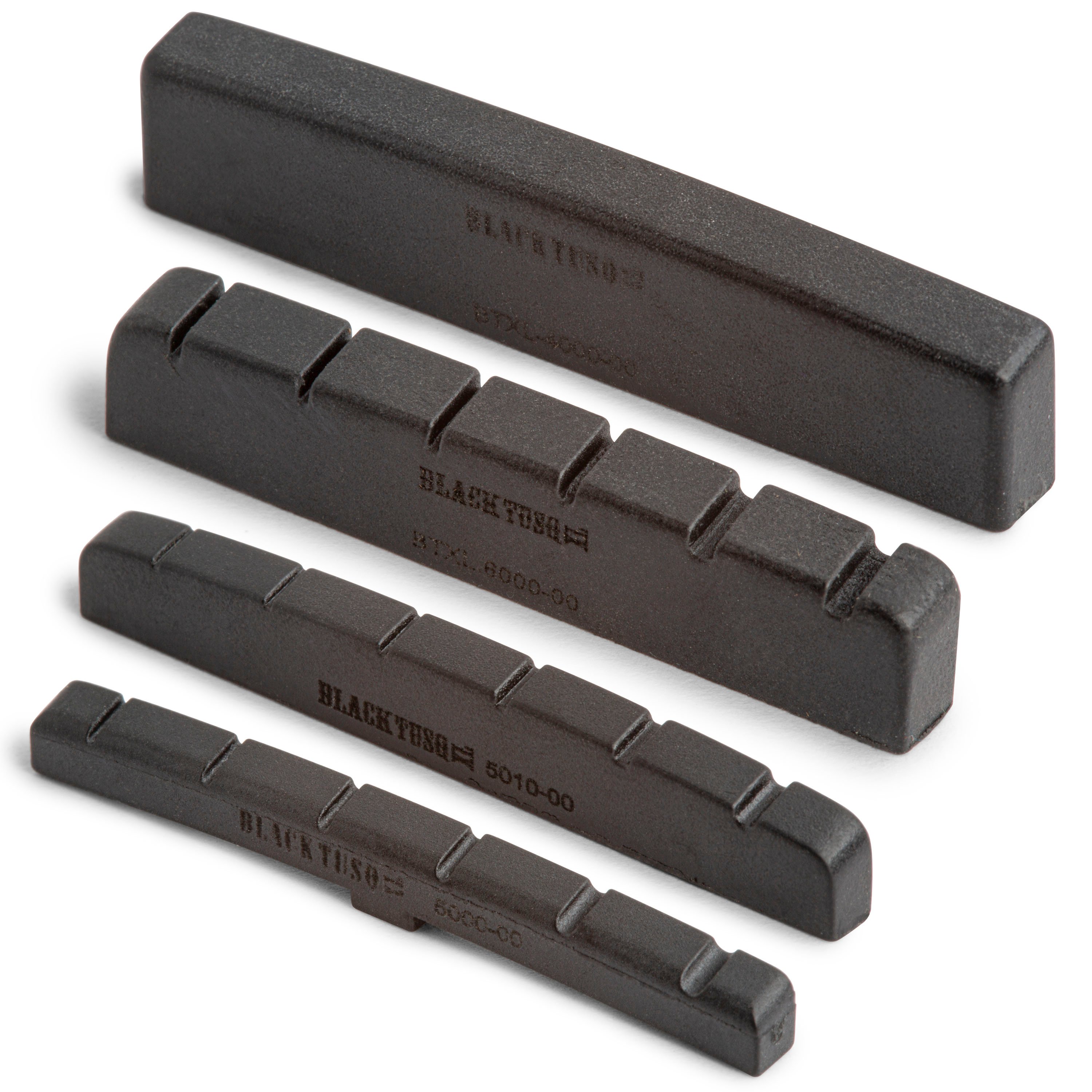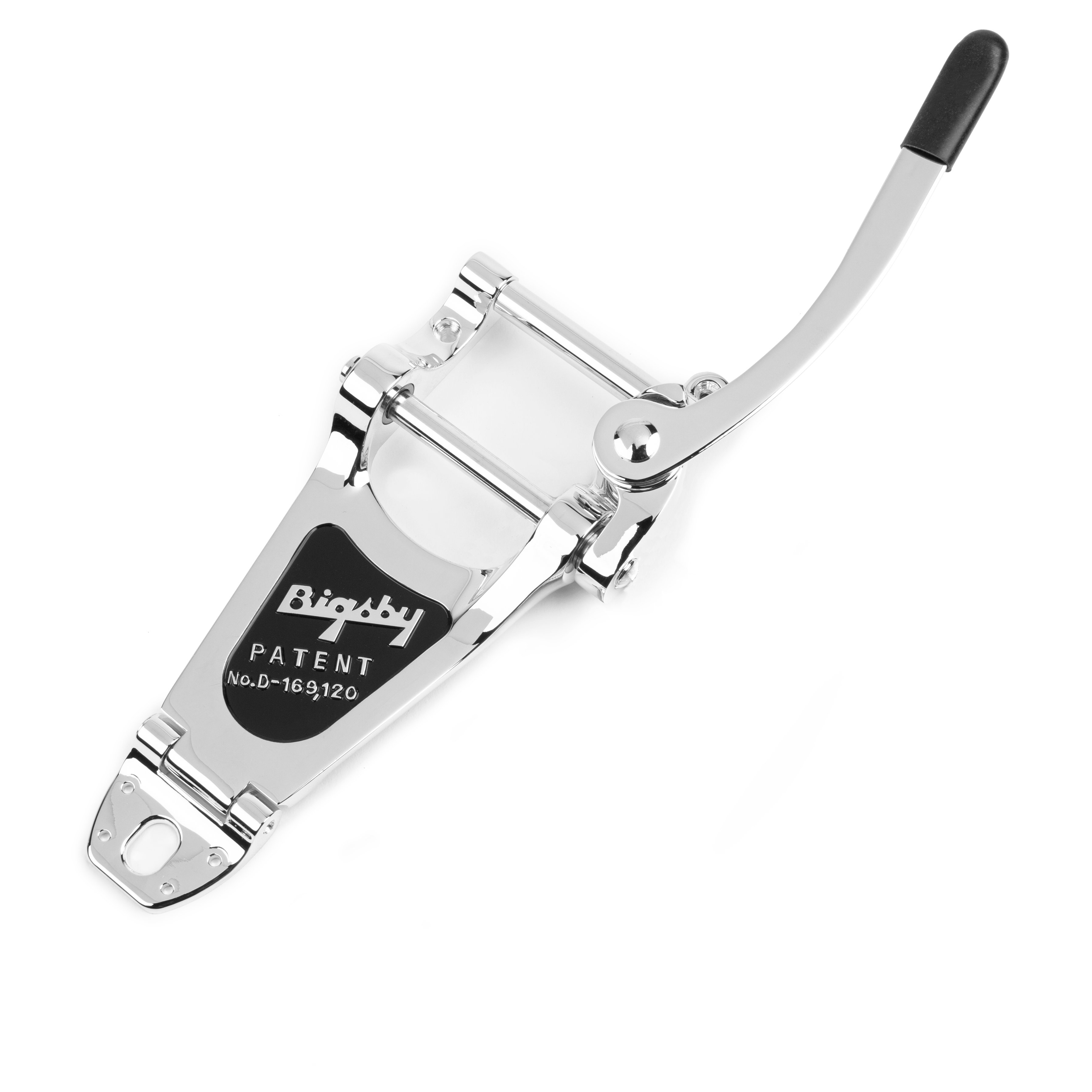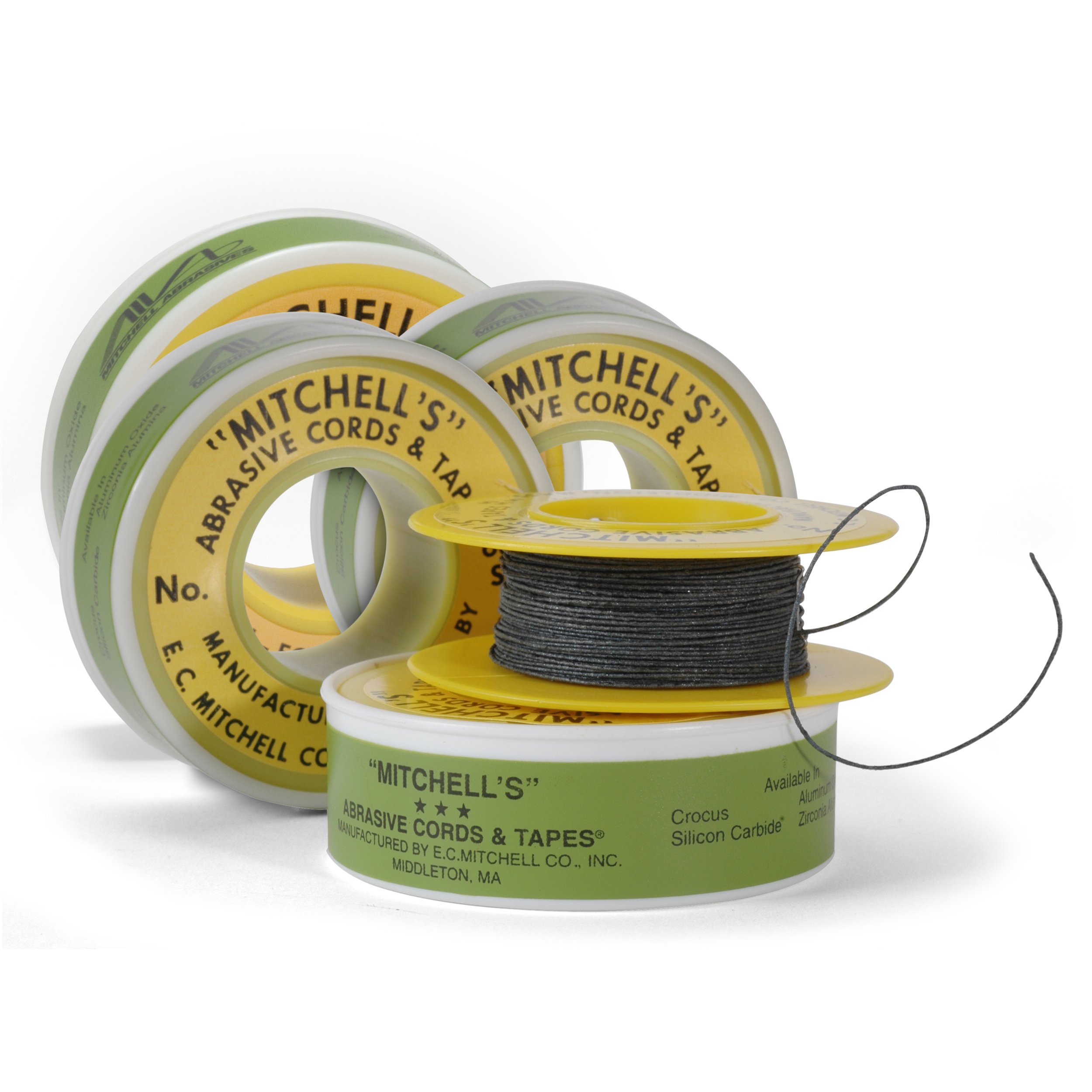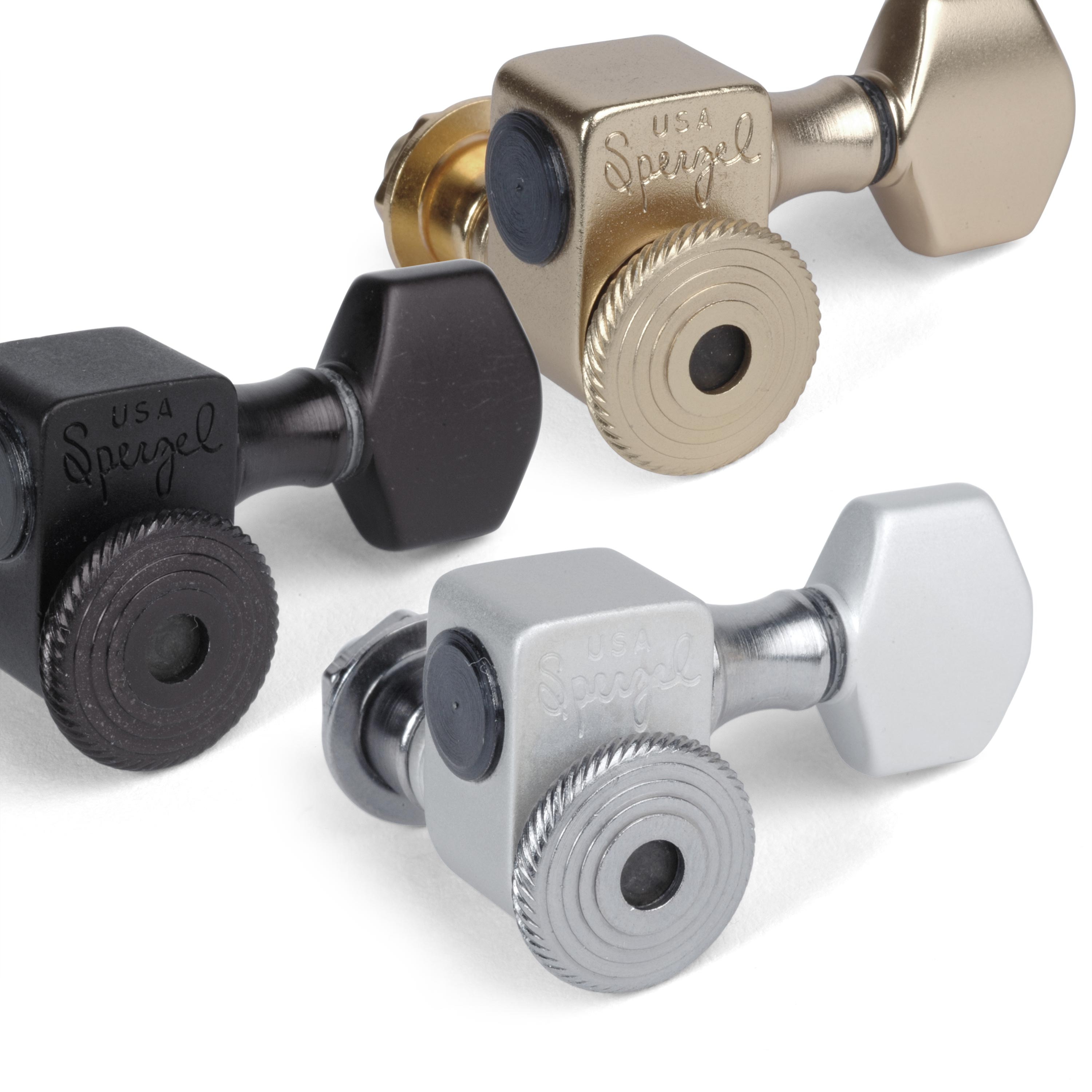Tremolo tips: staying in tune with a twang bar
You don’t have to install a locking system to play in tune with a tremolo. If you want the light weight and simple design of a vintage trem, use this bag of tricks to keep your whammy bar in tune. Trem-tuning problems have as much to do with what goes on at the peghead as what goes on at the bridge. Nut slots are the primary culprit. If the strings don’t move freely in the slots, they’ll bind up when using the tremolo and won’t return to pitch when the bar is released. When filing the nut on a tremolo guitar, I cut the slots a few thousandths larger than the diameter of the individual strings. I round the bottoms of the slots with the sidewalls angling slightly away from the strings. This allows the strings to move freely through the slots with the tremolo. Page 109 of the new Guitar Player Repair Guide shows how Dan Erlewine likes to give a fan-shape to the slots for the string angling toward the tuning post. Another tip from Dan: he slightly flattens the bottom of the slot so its round shape doesn’t grip the string during tremolo use. I don’t know how he can see this kind of detail — that must be why he wears an OptiVISOR all the time! Nut material is also something to consider. A properly slotted bone nut will work perfectly, but many builders are choosing man made materials for their smooth and slippery character. When you’re finished slotting, polish the bottoms of the slots starting with 1000 grit. This cuts down on friction and improves overall tone. A small amount of lubricant also helps. These little gizmos can cause friction that keeps your strings from returning to pitch. It is important to keep them smooth and free of any rust or corrosion. Even on a brand new string tree, I clean up the underside with abrasive cord to give the string a glitch-free track to ride on. Some of the newer string trees use Teflon polymer (such as Tusq) or small rollers to give the strings a smoother surface to ride along. Every time you press the tremolo, your strings give a little bit of slack. If the strings are sloppily wound onto the tuners, that’ll cause problems. This picture shows how I wind strings on a trem-equipped guitar. The idea is to not have excessive windings that bulge and slip, preventing the tremolo from returning to pitch. The traditional Strat tremolo, as used by Fender for many years, is a favorite of blues and surf players. It pivots on six mounting screws, and has limited travel (mostly downward). This design is typically set up to lie flat against the body. With this kind of trem, first make sure the pivot screws are correctly adjusted. If they’re too tight, the bridge won’t move properly. Start with the screws a bit loose and lower them until they just touch the plate. Listen for scratchy, clicking sounds coming from around these screws. Small worn spots in their shafts can cause sticking and keep the bridge from returning to its proper position. If they’re worn, replace the screws. The action on this tremolo is adjusted by springs on the back of the guitar. I like to use 5 springs; it just feels the best to me. But that’s a matter of preference and will vary depending on playing style, string gauge and finding the feel you like. Here’s how I find the right spring tension for me: I loosen the springs then bend a note, hard, on the B string. If the bridge pulls forward on this hard bend, the spring tension’s too light. Just enough tension to keep the bridge steady through a tough B string bend is my preferred balance of string vs. spring tension. Loosen the springs until the bridge sits up slightly on the back end. This allows for both downward and upward travel of the bridge. It also allows you to lightly pull on the bar to bring strings back in tune should they become stuck at the nut. Bigsby vibratos give a very subtle tremolo effect. I usually find that tuning problems on a Bigsby-equipped Gibson, Gretsch or Guild aren’t the Bigsby’s fault. More often it’s a matter of tweaking the Tune-o-matic bridge. Sometimes the saddles become cross-grooved by the strings, or have burred edges where the strings can get hung up. Before stringing up, run some abrasive cord through the slots to clean them up all nice and smooth-like. Installing strings on a Bigsby is tricky. Dan made this little tool: a dowel and a nail to hold the string’s ball end. Wrap the string around the dowel, and it’s pre-bent into the shape of the Bigsby’s string bar. A piece of foam can hold the strings while you string up. Roller bridges take sticky saddles out of the equation, giving the strings smooth, glitch-free action. And GraphTech nuts and saddles also keep your strings moving freely. Rockabilly legend Danny B. Harvey uses Graph Tech saddles to help keep his Bigsby equipped Gibson SG in tune. Modern “floating” bridges use two pivot screws. Pioneered by Floyd Rose, the design has since been adopted by non locking bridges.They’re called “floating” because they sit above the body and can be both pushed and pulled for an extra-wide tremolo range. Slipstone is another man-made substance, the material preferred by Roger Sadowsky. When shaping a nut for a floating-trem guitar, I keep the top of the nut a little on the tall side so the strings have a better chance of staying in the slots under heavy bar action. These are staggered in height, a nice design that takes string trees out of the equation by pulling each string across the nut at its proper angle. Sperzel’s locking feature removes any slippage at the string post. To set up a floating trem, adjust the springs so the bridge sits parallel with the top of the guitar. Usually three springs are recommended for a balanced feel, but some can get away with two — depending on string gauge and playing style.Twang Bar Tuning Tips

The first place we’ll look for tremolo trouble isn’t the bridge, it’s the peghead.
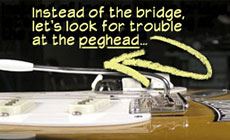
Problem 1: the nut
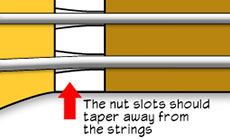

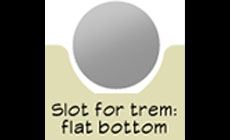
Problem 2: string trees
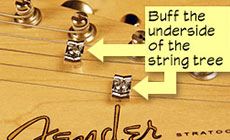
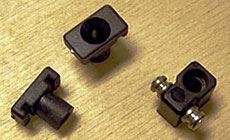
Problem 2: string installation
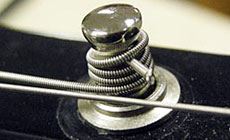
Tuning tips for 3 styles of tremolos
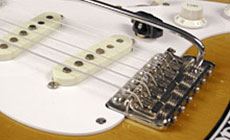
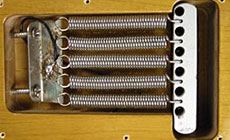
Another option is to set the bridge up as a semi-floater.
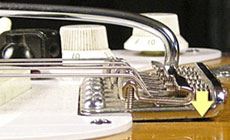
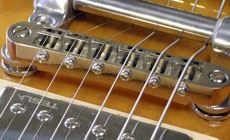
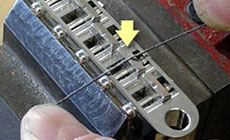
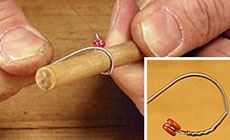
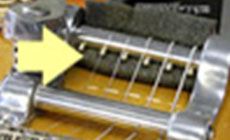
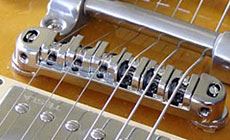
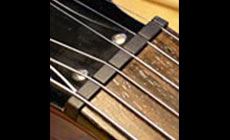
With this kind of bridge, I recommend two upgrades to improve tuning stability:
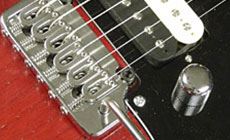
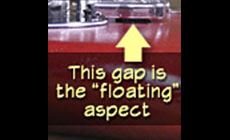
Slipstone nut:
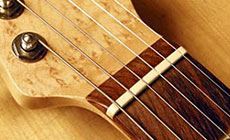
Sperzel locking tuners:
